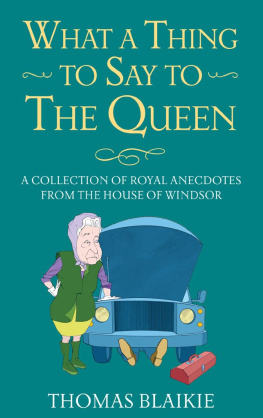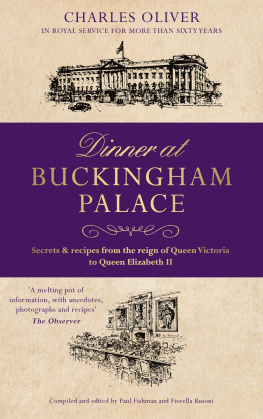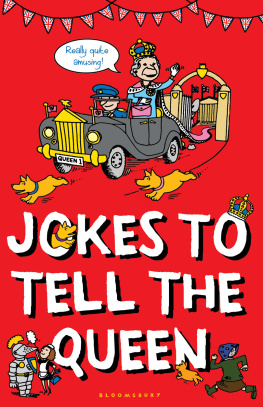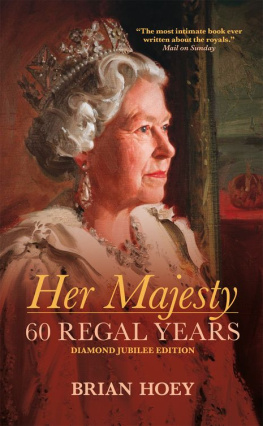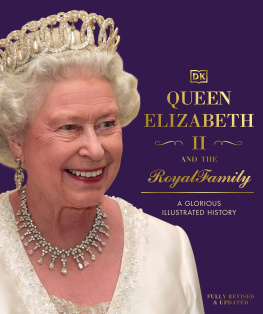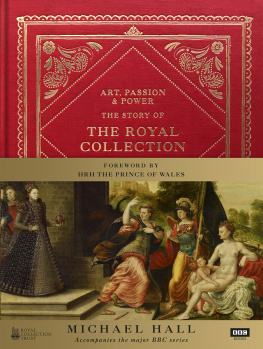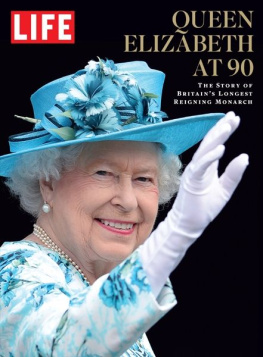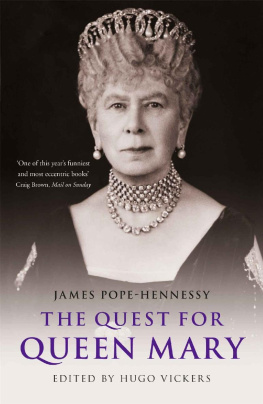What a Thing to Say to the Queen
Contents
I n her 90th year, the Queen celebrates becoming the longest-reigning monarch this country has known. Never have her people embraced her more warmly. We love her because she is always there, doesnt make a fuss and is dedicated to her duty even in old age. But she adapts and the monarchy has changed without appearing to do so. The Queen sent her first tweet in October 2014. Famously she played herself in a mini-Bond movie to mark the opening of the London 2012 Olympics. She refers publicly to William and Kate like everybody else; no stuffiness not the Duke and Duchess of Cambridge.
The strength of the behind-the-scenes vignettes and anecdotes you will find in this book springs from her outstanding personality and those of her immediate family, who between them have been at the heart of the royal scene for almost a hundred years. The Queen is witty and quick, friendly and unstuffy, yet magically regal and formidable at the same time.
Youll see the Queen at home, even in the kitchen, then on official business, travelling and in the paddock at the races. Her eye for detail, her quick wit, her sensitivity, her unflappability and her modesty all shine through these stories, however small. Her mother and sister, too, emerge as exceptional personalities. While alive, Princess Margaret gave concern and could be impossible. But now she seems splendid, rather like the Queen in Alices Adventures in Wonderland. The Queen Mother, too, was remarkable for her energy and the iron will with which she remained poised and charming for more than a hundred years. She was much cleverer and better informed than she let on and a tremendous life force.
We have much to celebrate in our Royal Family and I hope that this book suitably rises to the occasion of the Queen becoming the longest-reigning monarch.
A t Highclere, better known as Downton Abbey, a farm worker was wedged under a broken-down trailer when he heard a familiar voice asking, Can I help? It was the Queen, in a headscarf, out walking with a dog. She is one of those guests who wants to make a contribution.
T he Queen had an adventure getting to a private party in London recently. We were coming across the Park, she told friends, when a policemen stepped in front of the car and made us wait while a big procession of vehicles passed by with blue flashing lights. It must have been a very important ruler.
O n the morning of 7 July 1983, the Queen awoke to find a stranger in her bedroom, wielding a shard of broken glass. The situation required patience as well as courage. Luckily Im used to talking to people on street corners, she said afterwards.
I n October 1957, when the Queen, still in tiara and evening dress, left New York late at night after a ball, bystanders in their nightclothes lined the route to the airport, some of the women in curlers. I wouldnt stand out of doors in my dressing gown to see someone come by in a car, whoever they were, the Queen remarked.
I n the royal tea tent at Buckingham Palace garden parties, the Queen takes off her shoes, rests her hand on her hip and banters with her butler before resuming her rounds.
I t was a big adventure meeting the Beatles at the Royal Variety Show in 1963. The Queen asked where their next show was. Slough, Maam, Paul McCartney replied. She was delighted. Oh, thats near us!
T he estate of Princess Alice, mother of the Duke of Edinburgh, who died in December 1969, amounted to just three dressing gowns.
T he Queen told Annie Leibovitz about the visit of a very different kind of photographer. Jane Bown came all by herself and I helped her move the furniture, the Queen explained.
C amilla couldnt see what all the fuss was about over her forthcoming wedding to Prince Charles. Its just two old people getting hitched, she remarked.
I n 2000, Alan Titchmarsh was about to address the AGM of the Sandringham Womens Institute, by tradition held every January and chaired by the Queen. But he realised that Her Majesty was sitting awkwardly close, just on the other side of a trestle table. You push, and Ill pull, she suggested. Thus they moved the table.
E lizabeth didnt truly feel a Queen until she saw the Windsor milk bottles emblazoned with E.R.
I n the late 1950s, the Queen flew out to Corsica and Sardinia, but it rained. She went with Princess Alexandra to eat in simple local restaurants.
I n 1959, the Queen was asked if she would meet an old lady of 105 who was waiting in her car. They shouldnt have done it. They might have killed her, she said.
H er lady-in-waiting once remarked to the Queen, Its such thrill to do this. They were driving right across the middle of Hyde Park Corner, a privilege only allowed to royalty. Oh, but its so conspicuous, said the Queen.
F or twenty years, the police tried to persuade the Queen to have motorcycle outriders: I cant have all those sirens blaring, shed protest. Id be like Idi Amin or Gaddafi.
T he Queen will be here at teatime, a courtier once told a young Prince Harry at Sandringham. Whos the Queen? he enquired.
A fter church at Windsor on Sunday mornings, the Queen would invariably call on the Queen Mother at Royal Lodge, always slipping in the back way to avoid upstaging her.
A t one of her favourite fashion houses, the Duchess of Cambridge needed to borrow suitable footwear for the dress she was trying on. All that could be found were white satin wedding shoes. The Duchess was delighted by the bizarre effect of black tights with white satin wedding shoes.
O n most mornings, Princess Elizabeth, when living at Clarence House, walked her corgis in St Jamess Park, disguised in an old mac and headscarf.
A particularly dilapidated Rover was regularly seen on the Chelsea Embankment on Friday afternoons in the 1960s. The headscarved figure at the wheel was the Queen, driving herself down to Windsor for the weekend.
O nce, when in Scotland, the Queen Mother shared her picnic with some random walkers she came across.
L ady Mountbatten often found people in need in the street and sent them down to her basement kitchen to be given a hot drink by her butler.
D uring his engagement, Prince Philip stayed at Kensington Palace with his grandmother, the Dowager Marchioness of Milford Haven. But the accommodation was derelict, with no carpets. The stairs creaked chronically and the Prince had to climb in via the roof to avoid waking his grandmother when returning after hours.
I n the 1950s, the Duke of Edinburgh visited the Ideal Home Exhibition and the like. He would always come back with tins of soup, a washing machine or a food mixer very welcome to a servantless couple in a small flat, according to his valet.

